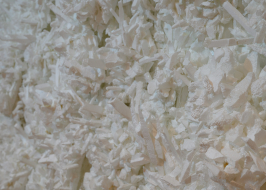Ronit Keret"Tears - Site-specific installation"Sussman Family building for Environmental Sciences1
The Looming Flood
Cry as hard as you can. That’s the angry message that Benni Efrat sent us “from the future.” Efrat, one of the pioneers of conceptual art in Israel, learned about climate warning in the 1970s when he exhibited at MIT and met scientists there who exposed him to the phenomenon. He was shocked by the fact that the public in Israel, the U.S and Europe did not recognize the impending disaster and failed to respond with immediate emergency measures, and he began to send – via monumental works of art – apocalyptic messages that ostensibly came from the future, when humanity had already passed the point of no return and was destined to be erased from the face of the warming planet.
Fifty years later, Efrat’s “future” is already our present, and Ronit Keret brings us face to face with a visual message that echoes Benni Efrat’s message and powerfully strikes our consciousness. But while Efrat observed climate warming from a safe distance, from a satellite view, Ronit Keret brings us into close contact with a melting glacier, whose tears should mix with ours, in our immediate future, here and now, as it’s doubtful we’ll be able to prevent the approaching tragedy. Cry as hard as you can, Keret tells us, because the glaciers are already pouring tears upon you and on your future. The tears flow in channels that spring from the melting, cracked, broken glaciers that were once naively called “permanent glaciers.”
The site-specific installation Keret created at the Environmental Sciences building at the Weizmann Institute of Science – one of a series of monumental installations she has exhibited in recent years at various sites – is entitled “Tears.” It is made of Styrofoam pieces she cuts and sculpts from packaging material she collects from street corners. The installation stretches up an entire wall, along the building’s lobby, in an area where the visitors are compelled to look at the “tip of the iceberg” at a relatively short distance, which underlines the physical size of the natural phenomenon, along with the alarming fact that the disaster is so close. The immediate feeling is that the collision is already unavoidable. A sound system plays creaking and quiet sounds of breakage – an authentic recording of the glaciers cracking and melting.
As we face the “Tears” installation, the future, which once seemed solid to us, transitions to a different state and simply leaks between our fingers. And we can only shed some of our own self-confidence and cry as hard as we can.







